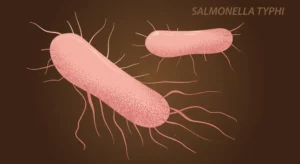Brown algae or Phaeophyceae are primarily marine, multicellular organisms characterized by their distinct brown color. This color is due to the presence of a golden brown xanthophyll pigment fucoxanthin.
Brown algae include some of the largest and most important species of algae such as Kelps which are essential for marine ecosystems promoting biodiversity and providing crucial habitats for various marine lives. Brown algae usually inhabits cold temperate regions however some species may also be present in warmer coastal regions.


Characteristic Features of Brown Algae
Brown algae differ from other algae by their pigmentation, they possess a characteristic brown color due to fucoxanthin which allows them to absorb light in the blue-green range, facilitating them to inhabit the deep surfaces under the sea where light supply is limited. In addition to fucoxanthin, chlorophyll a, c, carotenoids, and other xanthophylls also exist.
Brown algae are largely multicellular with uni-nucleate cells but they lack tissues and organs, their thallus is differentiated into functional structures.
The thallus of brown algae is differentiated into-
Holdfast– It is an anchor-shaped structure that helps in anchorage to the surfaces.
Stipe– It is the stem-shaped structure that uploads the blade.
Blade– It is the leaf-shaped structure where photosynthesis takes place.
The size of the brown algae can range from microscopic to more than fifty meters in length.
The cell wall of brown algae is composed of cellulose and alginic acid.
Brown algae are sexually and asexually reproducing. They also show alternation of generation in their life cycle with diploid sporophyte as well as haploid gametophyte phase.
Classification of Brown Algae
Brown algae are categorized into various orders based on their physical traits, life cycles, and biochemical characteristics. The main orders within Phaeophyceae include:
Order Laminariales (Kelps and Related Species)
This order consists of large brown algae such as Laminaria, Macrocystis, and Nereocystis, commonly referred to as kelps.
Kelps rank among the largest species of brown algae, creating vast underwater forests that provide food and habitat for marine organisms.
They typically thrive in cooler temperate regions and play a crucial role in coastal marine ecosystems.
Order Fucales (Rockweed and Gulfweed)
This order includes species predominantly found in intertidal zones and coastal areas, such as the genera Fucus and Sargassum. Members of this order are generally robust and adaptable to environmental changes, capable of withstanding variations in temperature and salinity found in intertidal regions.
Species like Sargassum are buoyant and can form extensive mats in open waters, offering refuge for marine life.
Order Chordariales (Deep-sea Algae)
Organisms in this order are usually found at greater depths in the ocean. They are generally smaller than kelps and often possess special structural adaptations that help them survive in low-light environments. Chordaria, a typical genus, represents one such species of deep-water brown algae.
Order Dictyotales
These are small, primitive brown algae that typically form thin sheets or filaments. They are generally found in tropical and subtropical waters. Despite their simpler structure compared to other brown algae, they still play a significant role in marine ecosystems. Example- Dictyota
Order Ectocarpales
This order consists of tiny, filamentous algae that thrive in intertidal regions or shallow waters. They usually form branched or unbranched thalli and are crucial as a food source in the food web, being eaten by herbivorous marine creatures. Example- Ectocarpus
Order Tilopteridales
Although less common, some small brown algae from coastal waters fall under this category. Species in this order are sometimes utilized in research due to the unique biochemical properties of these organisms. Example- Tilopteris
These orders illustrate distinct categories of brown algae, each with its ecological functions, physical traits, and adaptations to varying environmental conditions.
Habitats of Brown Algae
Brown algae (Phaeophyceae) are chiefly marine, with more than 1,800 species occurring in different aquatic habitats. They occur in various habitats such as-.
Coastal Waters: They are found growing attached to rocks, coral reefs, and other substrates in the intertidal zone and sub-tidal zone.
Open Ocean: Certain species, such as Sargassum, are free-floating and create extensive mats in the ocean, e.g., the Sargasso Sea.
Deep Waters: Large kelps (e.g., Macrocystis, Laminaria) grow in deeper water, creating underwater dense forests.
Tropical and Temperate Regions: Although temperate and polar waters are favorable for most brown algae, certain species such as Padina and Dictyota grow in tropical areas.
Ecological Roles of Brown Algae
Brown algae are important to marine ecosystems as:
Primary Producers: They play an important role in photosynthesis and act as the foundation of the food web, subsidizing marine organisms.
Habitat and Refuge: Large brown algae, for example, Kelps and Sargassum, offer protection to fish, invertebrates, and other marine animals.
Shore Protection: Kelp forests dissipate wave energy and protect shorelines from erosion.
Oxygen Generation: Through the process of photosynthesis, they maintain oxygenation in marine communities.
Carbon Storage: Brown algae take up CO₂, countering climate change.
Morphology and Structure of Brown Algae
Brown algae have varied morphological forms, ranging from microscopic filaments to gigantic kelp forests. Their structure is divided into several important components:
Thallus– The thallus of brown algae are of the following types-
Filamentous: Thin, thread-like structures (Ectocarpus).
Leaf-like: Flat, sheet-like structures (Dictyota, Padina).
Branched or Bushy: Many marine species have highly branched thalli (Sargassum).
Massive and Complex: Kelps (Macrocystis, Laminaria) reach lengths of 60 meters.
Generally, the thallus of brown algae is differentiated into-
Holdfast– It is a root-like structure that helps in anchorage to the surfaces.
Stipe– It is the stem-shaped structure that holds up the fronds and joins the holdfast to the blade.
Blade– It is the leaf-like structure where photosynthesis takes place.
Certain brown algae like Sargassum possess gas bladders or pneumatocysts that assist in maintaining buoyancy.
Reproduction and Life Cycle of of Brown Algae
Modes of Reproduction- Brown algae reproduce both sexually and asexually.
Asexual Reproduction– It takes place through fragmentation or the development of zoospores. Zoospores are flagellate and motile, which aids them in dispersal in water.
Sexual Reproduction– Most brown algae exhibit oogamous reproduction, where they form large, immotile eggs and tiny, motile sperm. Fertilization takes place externally in the water or inside reproductive organs such as conceptacles (such as in Fucus).
Life cycle–
Brown algae have intricate life cycles, with frequent alternation of generations, wherein they alternate between two forms:
Sporophyte (Diploid – 2n): The dominant, larger generation that yields spores.
Gametophyte (Haploid – n): The microscopic, small phase that gives rise to gametes (sperm and eggs).
In the case of Laminaria, the life cycle alternates between big sporophytes and microscopic gametophytes. For Fucales (such as in Fucus), the diploid sporophyte is dominant, and the gametophyte is minute.
Economic Importance of Brown Algae
Brown algae are economically and ecologically important, with uses in food, industry, medicine, and biotechnology.
Brown algae as food–
Brown algae are directly consumed as a food in coastal areas such as Japan, and Korea. Brown algae such as Laminaria are also used in soups, salads, and sushi.
Alginate extracted from brown algae is used as a thickener in ice cream, sauces, and milk products.
In industry–
Brown algae are used in textile and paper industries for thickening dyes and paints, cosmetics, wound dressings, and dental impressions.
Fucoidan, which is present in Fucus and Laminaria, has therapeutic applications in cancer treatment and immuno-modulatory drugs.
Iodine-containing species (e.g., Fucus) are used to treat thyroid diseases.
Biofuel and Bioplastics–
Certain species are under research for the production of biofuel because they have high carbohydrate levels. They can be utilized in the development of biodegradable plastics to replace petroleum-based products.
Environmental Benefits- Brown algae take up CO₂, lowering atmospheric carbon content and assisting in purifying water by eliminating heavy metals and toxins.
Chemical Compounds in Brown Algae-
Brown algae (Phaeophyceae) possess a complicated biochemical makeup that sets them apart from other algae groups. Major compounds are:
Alginates: These are cell wall polysaccharides present in brown algae. Alginates possess superior water-holding capacities and find extensive applications in foods, drugs, and cosmetics.
Fucoxanthin: Fucoxanthin, the typical brown pigment, has a spectrum that absorbs light between blue-green to yellow-green and is involved in photosynthesis.
Laminarin and Mannitol: Brown algae’s reserve carbohydrates. Laminarin functions as the reservoir of energy and mannitol, which is the sugar alcohol involved in osmosis.
Sterols: Brown algae have sterols like fucosterol, which serves a function similar to cholesterol in animals and has a role in the stability of the cellular membrane.
These special compounds render brown algae a valuable resource for several industries, particularly food processing and biotechnology.
Evolutionary History of Brown Algae
Brown algae are part of the Phaeophyceae class and have developed over millions of years. They have been thought to have developed from red algae, with the first fossil records of brown algae found to be approximately 200 million years old. Their evolutionary past entailed several notable developments:
Origin and Diversification: The origin of brown algae would have initiated in marine habitats, where they diverged to occupy different ecological niches, which resulted in the immense diversity today.
Survival Adaptations: Brown algae evolved special features like fucoxanthin for improved light trapping and alginates to thrive in agitated marine habitats. These features have enabled them to survive in cold, temperate, and rocky marine habitats.
Molecular phylogenetic studies of brown algae indicate that they are closely related to red algae, but their different pigments and biochemical pathways make them distinct. Genetic information has revealed that brown algae belong to the Stramenopiles group of the super-group Chromalveolata.
Notable Species of Brown Algae
Fucus vesiculosus (Bladderwrack): Temperate regions host this species, which is widely utilized in the pharmaceutical and cosmetic industries because of its high algal content and other bioactive compounds.
Laminaria digitata (Sugar Kelp): It is distinguished by its size and growth rate. It finds application in the food industry (for example, in the production of agar) and as an alginate source.
Macrocystis pyrifera (Giant Kelp): It is famous for creating extensive underwater forests, and giant kelp offers significant habitats to marine organisms. It is also a key source of alginate and has food processing and biotechnology applications in commerce.
Sargassum species: These kinds of species are commonly seen floating in the sea, creating huge mats that serve as homes for marine organisms. They are also employed in traditional medicine.
Conclusion
Brown algae are an exceedingly diverse and ecologically important marine group. Their distinct biochemical nature, comprising alginates, fucoxanthin, and laminarin, enables them to dominate different marine habitats. Their evolutionary past reveals a profound link to red algae, and their extreme adaptability has helped them evolve into a dominant component of marine life. With highly prized species like Fucus, Laminaria, and Macrocystis, brown algae remain highly valuable for their environmental function and economic value in the food industry, pharmaceuticals, and bioengineering.
References
- Admin. (2023, July 28). Brown algae or Phaeophyceae: characteristics, examples, and economic importance. BYJUS. https://byjus.com/neet/brown-algae/
- Seaweed.ie :: Information on marine algae. (n.d.). https://www.seaweed.ie/algae/phaeophyta.html
- Vadeboncoeur, Y., & Lowe, R. (2023). Benthic algae and cyanobacteria of the littoral zone. In Elsevier eBooks (pp. 817–857). https://doi.org/10.1016/b978-0-12-822701-5.00025-2
- T, N. (2016, August 24). Phaeophyceae (Brown algae): Description and classification. Biology Discussion. https://www.biologydiscussion.com/algae/phaeophyceae-brown-algae-description-and-classification/46948
- Pan, S. (2024, October 7). Phaeophyta (Brown Algae) – Characteristics, Occurrence, Thallus Organization, Cell Structure and. Biologynotesonline.com. https://biologynotesonline.com/phaeophyta-brown-algae-characteristics-occurrence-thallus-organization-cell-structure-and-reproduction/
- Bringloe, T. T., Starko, S., Wade, R. M., Vieira, C., Kawai, H., De Clerck, O., Cock, J. M., Coelho, S. M., Destombe, C., Valero, M., Neiva, J., Pearson, G. A., Faugeron, S., Serrão, E. A., & Verbruggen, H. (2020). Phylogeny and evolution of the brown algae. Critical Reviews in Plant Sciences, 39(4), 281–321. https://doi.org/10.1080/07352689.2020.1787679
- El-Beltagi, H. S., Mohamed, A. A., Mohamed, H. I., Ramadan, K. M. A., Barqawi, A. A., & Mansour, A. T. (2022). Phytochemical and potential properties of seaweeds and their recent applications: a review. Marine Drugs, 20(6), 342. https://doi.org/10.3390/md20060342
- Li, Y., Zheng, Y., Zhang, Y., Yang, Y., Wang, P., Imre, B., Wong, A. C. Y., Hsieh, Y. S. Y., & Wang, D. (2021). Brown Algae carbohydrates: structures, pharmaceutical properties, and research challenges. Marine Drugs, 19(11), 620. https://doi.org/10.3390/md19110620
- Hakim, M. M., & Patel, I. C. (2020). A review on phytoconstituents of marine brown algae. Future Journal of Pharmaceutical Sciences, 6(1). https://doi.org/10.1186/s43094-020-00147-6
- Cock, J. M., Peters, A. F., & Coelho, S. M. (2011). Brown algae. Current Biology, 21(15), R573–R575. https://doi.org/10.1016/j.cub.2011.05.006



